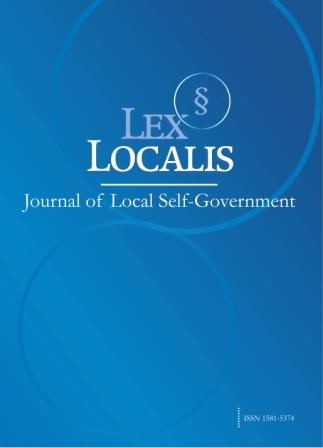Intelligent manufacturing driven by digital economy realizes double growth of output value and benefits through technological innovation
DOI:
https://doi.org/10.52152/800026Keywords:
digital economy; manufacturing enterprises; smile curve; artificial intelligence level; industrial policyAbstract
This paper starts from the mechanism of digital economy empowering manufacturing enterprises, the reshaping of the smile curve of manufacturing industry, and deeply explores the role and influence path of intelligent manufacturing industry in realizing the double growth of output value and efficiency through technological innovation. Listed companies in the manufacturing industry from 2014 to 2023 are selected as samples, and variable data are obtained through (CSMAR) database and (RESSET) database. A multiple linear regression model was constructed with enterprise new quality productivity (Npro) as the explanatory variable, and artificial intelligence level (AI), smart manufacturing industrial policy (TreatxPost), and research and development investment (R&D) as the explanatory variables. The results show that the coefficients of AI, TreatxPost, and R&D are 1.056***, 0.398***, and 0.520*** after adding control variables, and the coefficients are positive and significant, which validate the 3 hypotheses. 3 hypotheses were verified. The line trend test and propensity score matching verified the validity of the double-difference method and the positive influence mechanism of key independent variables on the new quality productivity of enterprises in the smart manufacturing industry, realizing the double growth of output value and benefits, and providing new paths and opportunities for the transformation and upgrading of manufacturing enterprises.
References
Zhang, K., Wang, J., & Wu, Y. (2025). A Study of the Impact of Manufacturing Input Digitization on Firms’ Organizational Resilience: Evidence from China. Sustainability, 17(3), 897.
Zhang, J., & Liu, M. (2024). How to leverage digital sustainability orientation to promote environmentally sustainable practices of manufacturing enterprises in China. Sustainability, 16(12), 5112.
Yin, Y., Zhang, Z., Da, K., & Wen, X. (2024). Sustainable Influence Mechanism of Technological Innovation Diffusion on Intelligent Transformation of Manufacturing Enterprises Based on Competitive Advantage and Value Chain Can Regulate Mediation Effect Analysis. Polish Journal of Environmental Studies, 33(2).
Shen, H., & Wang, Z. (2024). Coupled and coordinated development of economic growth and green sustainability in a manufacturing enterprise under the context of dual carbon goals: carbon peaking and carbon neutrality. Economics, 18(1), 20220107.
Chen, T., & Zhou, S. (2024). The impact of digital economy on the upgrading of manufacturing structure. PloS one, 19(7), e0307184.
Dong, J. (2024). Marketization of digital economy elements and high-quality development of manufacturing industry—taking Jiangsu as an example. Open Journal of Social Sciences, 12(9), 442-451.
Tsolakis, N., Harrington, T. S., & Srai, J. S. (2023). Digital supply network design: a Circular Economy 4.0 decision-making system for real-world challenges. Production Planning & Control, 34(10), 941-966.
Lei, H., Tang, C., & Long, Y. (2024). Study on the impact of digital economy on industrial collaborative agglomeration: Evidence from manufacturing and productive service industries. PloS one, 19(8), e0308361.
Li, X., Tang, H., & Chen, Z. (2025). Artificial Intelligence and the New Quality Productive Forces of Enterprises: Digital Intelligence Empowerment Paths and Spatial Spillover Effects. Systems, 13(2), 105.
Chen, D., Xu, H., & Zhou, G. (2024). Has artificial intelligence promoted manufacturing servitization: evidence from Chinese enterprises. Sustainability, 16(6), 2526.
Zhang, Z., Li, P., Huang, L., & Kang, Y. (2024). The impact of artificial intelligence on green transformation of manufacturing enterprises: evidence from China. Economic Change and Restructuring, 57(4), 146.
Zhang, X., Gong, D., Huang, Y., & Li, Y. (2024). The Government's fiscal and taxation policy effect on enterprise productivity: Policy choice and optimal allocation. International Review of Economics & Finance, 93, 28-41.
Zheng, B., Wu, X., Huo, X., & Wang, S. (2024). Can low-carbon cities pilot policy promote enterprise sustainable development? Quasi-experimental evidence from China. Plos one, 19(5), e0301317.
Zhang, Z., Li, P., Wang, X., Ran, R., & Wu, W. (2024). New energy policy and new quality productive forces: A quasi-natural experiment based on demonstration cities. Economic Analysis and Policy, 84, 1670-1688.
Yang, G., Deng, F., & Du, M. (2023). Research on the asymmetric influence of non-R&D subsidy and R&D subsidy on digital enterprises performance: Empirical evidence from China’s digital industry. Journal of the Knowledge Economy, 1-38.
Zhao, Q., Li, Z., & Zhang, C. (2024). The impact of R&D and Non-R&D subsidies on technological innovation in Chinese electric vehicle enterprises. World Electric Vehicle Journal, 15(7), 304.
Oh, I., & Hwang, S. (2024). Assessing the effect of the size of r&d subsidies on the economic performance of SMEs: Comparison of manufacturing and service firms in Korea. Journal of the Knowledge Economy, 15(1), 518-546.
Lu, L., Pan, W., Wang, H., Yang, S., Liu, Z., & Li, Q. (2024). The effect of servitising level on firm performance of listed Chinese sporting goods manufacturing companies—With moderated mediation effect. Plos one, 19(2), e0297226.
Li, W., & Zhang, M. (2024). Digital transformation, absorptive capacity and enterprise esg performance: a case study of strategic emerging industries. Sustainability, 16(12), 5018.
Downloads
Published
Issue
Section
License
Copyright (c) 2025 Lex localis - Journal of Local Self-Government

This work is licensed under a Creative Commons Attribution-NonCommercial-NoDerivatives 4.0 International License.








